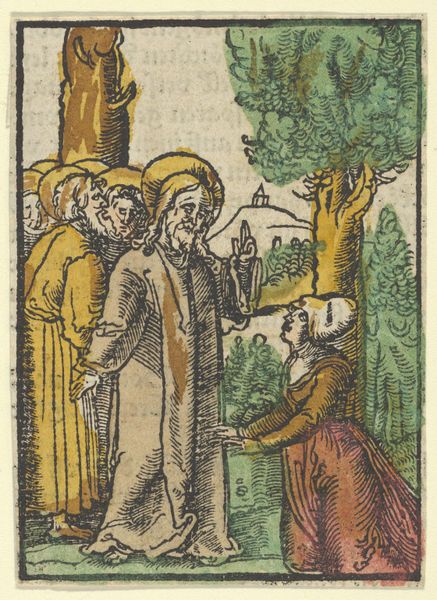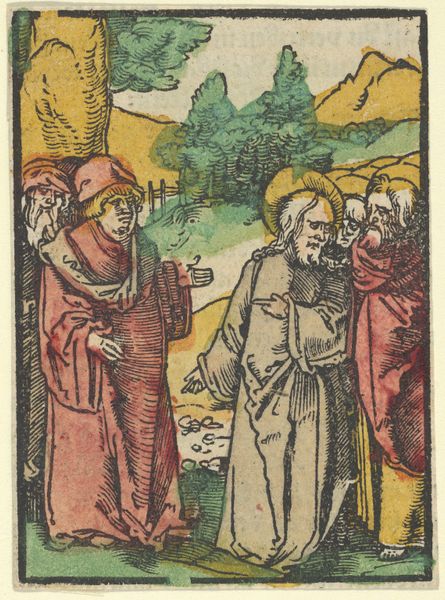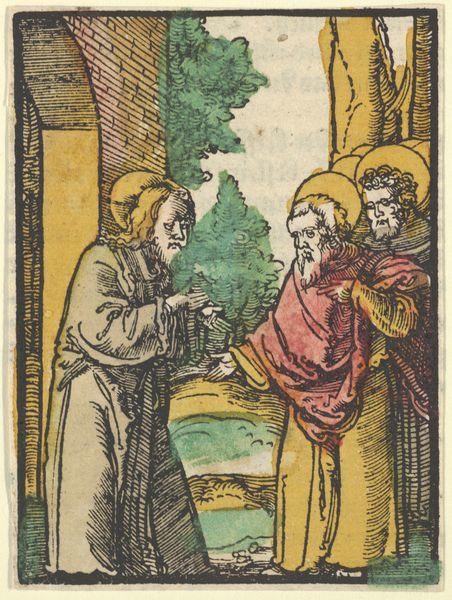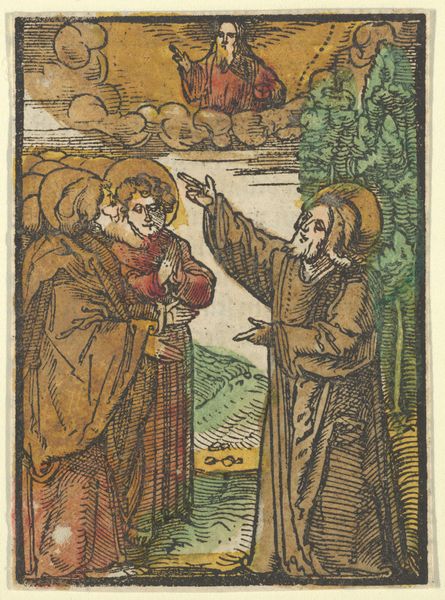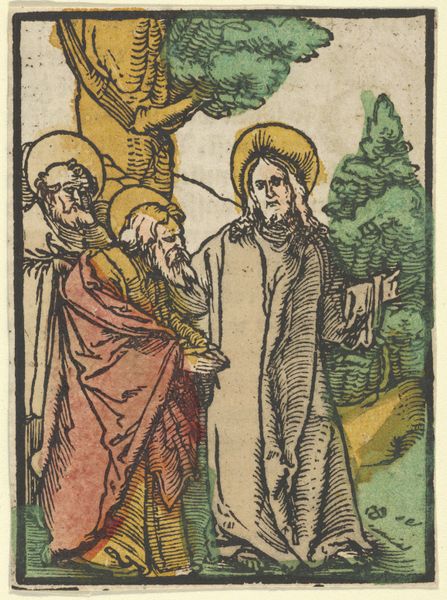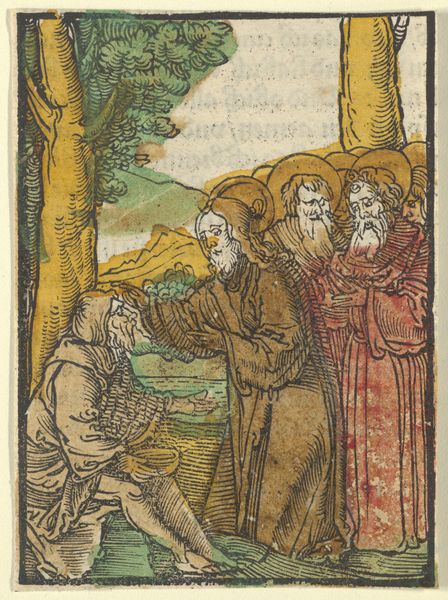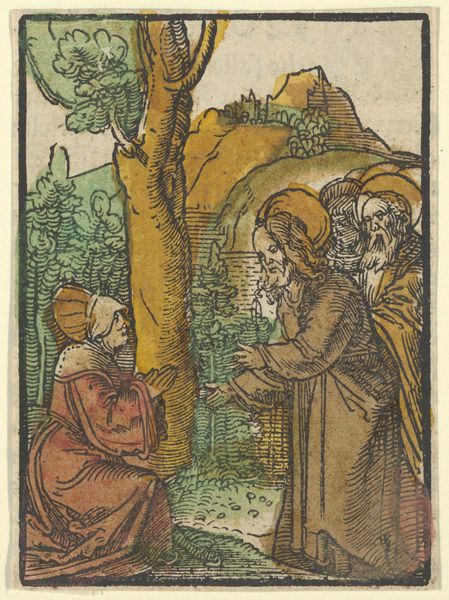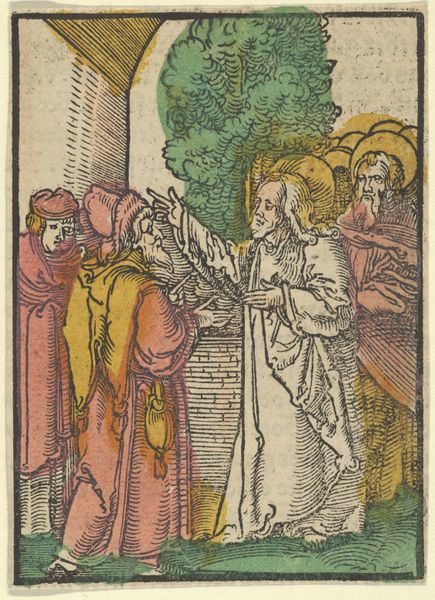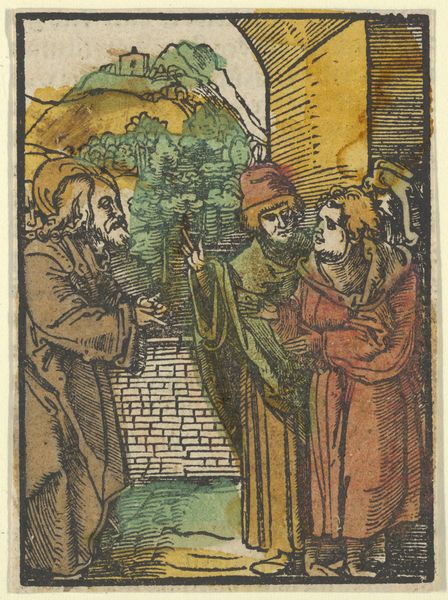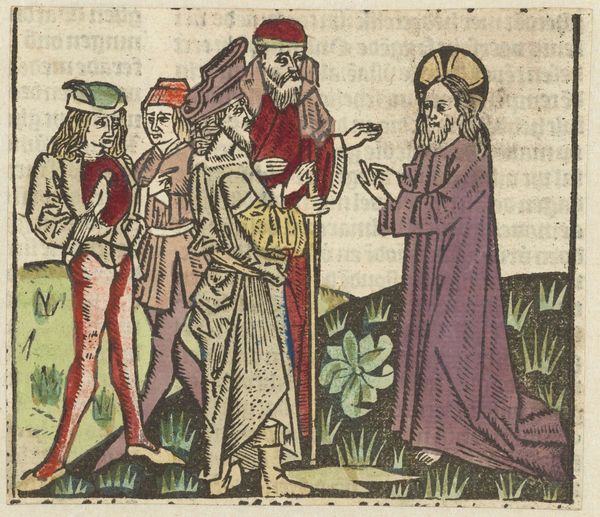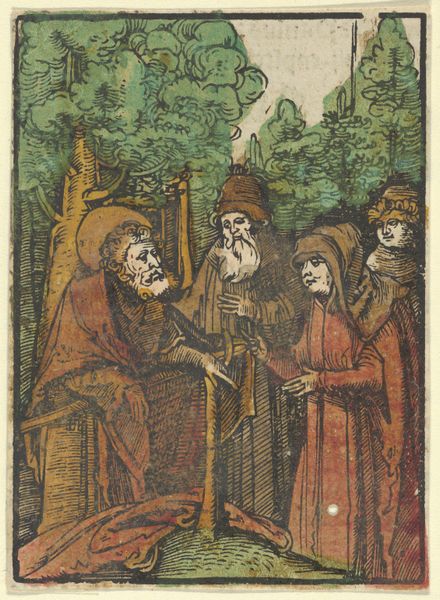
drawing, print, woodcut
#
drawing
# print
#
figuration
#
woodcut
#
history-painting
#
northern-renaissance
Dimensions: Sheet: 3 11/16 × 2 11/16 in. (9.4 × 6.8 cm)
Copyright: Public Domain
Curator: Hans Schäufelein crafted this woodcut around 1517, titled "Christ and the Pharisees," a print now residing at The Met. Editor: Right, a captivating, tense composition. I'm immediately struck by the figure of Christ – how Schäufelein employs that vibrant halo and delicate linear detail to isolate him, visually, from the somewhat clustered figures surrounding him. The poses and gestures lend a subtle rhythm. Curator: Indeed, and let’s consider the social lens. Schäufelein, deeply rooted in Reformation-era religious discourse, created this image as part of "Das Plenarium", intending these prints for wide distribution to reinforce particular readings of the Gospel narrative that were resonant to those eager for religious reform. These images offered visual reinforcement to the reformers’ critique of clerical hypocrisy. Editor: I notice how the rendering is quite meticulous; how would you characterize Schäufelein's formal strategy for rendering emotion here? Is the almost exaggerated contrast—a brighter Christ set against the darkened Pharisees—a direct way to suggest the painting's narrative tensions? Curator: Precisely, look at how those dense gatherings of Pharisees hem Christ in, representing what Reformers saw as a dogmatic institution blocking access to God. This strategic use of space emphasizes the political dynamics playing out around these religious figures. It’s a fascinating visual argument. Editor: The angular folds in clothing, combined with expressive hand gestures... there’s almost an echo of theatricality in their presentation of righteousness and condemnation. Curator: That's a sharp observation, as art during this period often took a didactic approach, vividly depicting biblical scenes to reinforce religious teachings within communities experiencing dramatic upheavals. Editor: Considering the historical period—seeing it with my own analytical interpretation of forms—Schäufelein has offered an insight into religious and secular tensions through contrasts and arrangement. It provokes me to contemplate what other symbols could have a socio-political narrative! Curator: Yes, by studying the placement and use of line and symbol we expose a time of profound reformation and shifts in socio-political values. It all underscores art’s enduring capability to visualize complicated moments in human history.
Comments
No comments
Be the first to comment and join the conversation on the ultimate creative platform.


